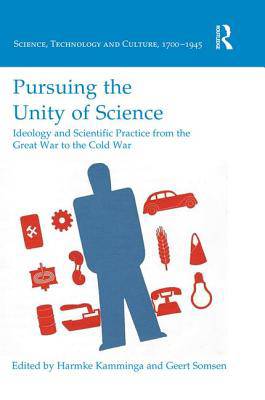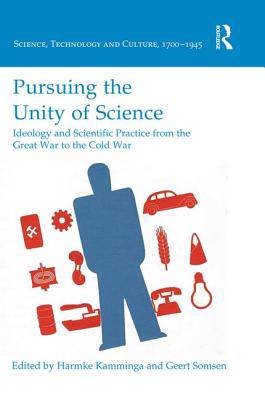
- Retrait gratuit dans votre magasin Club
- 7.000.000 titres dans notre catalogue
- Payer en toute sécurité
- Toujours un magasin près de chez vous
- Retrait gratuit dans votre magasin Club
- 7.000.0000 titres dans notre catalogue
- Payer en toute sécurité
- Toujours un magasin près de chez vous
Pursuing the Unity of Science
Ideology and Scientific Practice from the Great War to the Cold War
209,45 €
+ 418 points
Description
From 1918 to the late 1940s, a host of influential scientists and intellectuals in Europe and North America were engaged in a number of far-reaching unity of science projects. In this period of deep social and political divisions, scientists collaborated to unify sciences across disciplinary boundaries and to set up the international scientific community as a model for global political co-operation. They strove to align scientific and social objectives through rational planning and to promote unified science as the driving force of human civilization and progress. This volume explores the unity of science movement, providing a synthetic view of its pursuits and placing it in its historical context as a scientific and political force. Through a coherent set of original case studies looking at the significance of various projects and strategies of unification, the book highlights the great variety of manifestations of this endeavour. These range from unifying nuclear physics to the evolutionary synthesis, and from the democratization of scientific planning to the utopianism of H.G. Wells's world state. At the same time, the collection brings out the substantive links between these different pursuits, especially in the form of interconnected networks of unification and the alignment of objectives among them. Notably, it shows that opposition to fascism, using the instrument of unified science, became the most urgent common goal in the 1930s and 1940s. In addressing these issues, the book makes visible important historical developments, showing how scientists participated in, and actively helped to create, an interwar ideology of unification, and bringing to light the cultural and political significance of this enterprise.
Spécifications
Parties prenantes
- Editeur:
Contenu
- Nombre de pages :
- 244
- Langue:
- Anglais
- Collection :
Caractéristiques
- EAN:
- 9780754640356
- Date de parution :
- 27-05-16
- Format:
- Livre relié
- Format numérique:
- Genaaid
- Dimensions :
- 160 mm x 234 mm
- Poids :
- 498 g

Les avis
Nous publions uniquement les avis qui respectent les conditions requises. Consultez nos conditions pour les avis.





